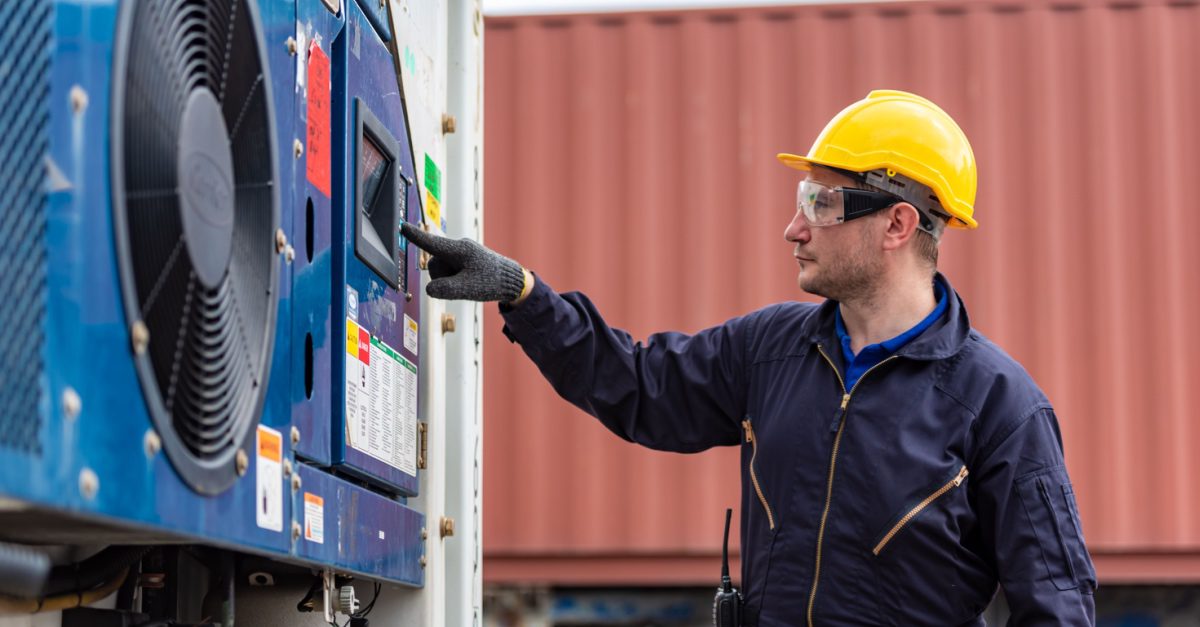One way to ensure your frozen goods survive a sustained power outage at home is to place a quarter of a frozen cup of water in your freezer. If temperatures fall below freezing, the water will thaw, and the quarter will sink into the melted ice, possibly refreezing. This reactive strategy works but not for shipping temperature-controlled freight. Climate-controlled goods rely on proactive measures to ensure the integrity of the cold chain stays true. This article discusses how balancing technology, data, and industry experience drives the details that make all the difference when shipping climate and temperature-controlled freight.
Defining the Details in Temperature-Controlled Shipping
Cold chain transportation is responsible for combatting all of the outside elements working against your shipment. Maintaining is the critical concept here. The particulars can make or break the integrity of your cargo and the ability to maintain ideal conditions. Here’s a rundown of the details that are indispensable for ensuring a successful journey from start to finish:
- Temperature Settings: The most obvious and most crucial detail is the temperature.
- Timely and Precise Monitoring: With perishables, time is of the essence. If there are risks such as equipment failure, the sooner you know, the sooner you can pivot and mitigate any losses.
- Loading: Strategic loading practices are crucial to maintaining temperature consistency and avoiding shifts that could cause damage.
- Packaging: Packaging is the first line of defense as it insulates and protects, ensuring that external temperature swings don’t impact the goods.
- Reliable Equipment: High-quality refrigeration units are non-negotiable for persistent performance.
- Special Handling: Some freight requires extra care and consideration. For instance, some fruits release gases that accelerate the ripening of other fruits.
- Humidity Levels: Like temperature, moisture levels are critical to product preservation, especially for bananas and plants.
- Precooling: This step can take a couple of hours. Reefer trailers shouldn’t be used to get the product to the proper temperature but to maintain the ideal conditions for that given product.
- Weather Considerations: We’ve recently seen record highs and lows, both of which can impact transporting temperature-controlled freight.
- Destination Requirements: Understanding routing challenges, delivery considerations, and regulations ensures the final handoff goes smoothly.
Embedding these elements into the logistics process isn’t just about ticking boxes; they are the backbone of a trustworthy cold chain partnership.
The Significance of Details in Ensuring Quality and Compliance
If you ever bought ice cream only to find it crystalized, it’s freezer-burnt due to falling in and outside ideal temperatures. It’s still edible, but sadly, it will have lost some of its taste and texture; from a consumer standpoint, it could be an experience that has them switch brands. The stakes increase when you consider products like vaccines, life-saving drugs, meats, chemicals, and other foods. The results could be life-threatening when the cold chain breaks on these products, making attention to detail and following best practices imperative.
Leveraging Technology for Precision and Reliability
Gone are the manual temperature logs of the past. At Logistics Group International (LGI), we harness a suite of advanced technologies to reduce the chances of human error and assure the quality of the shipping process. These technologies allow for real-time temperature monitoring to ensure optimal temperature control.
Our tech stack includes EDI and API integrations, as well as Power BI reporting and analysis. We leverage industry-leading software solutions from McLeod, Fourkites, Greenscreens, and DAT Freight & Analytics. Our commitment to technology integration is one of our critical differentiators at LGI. It allows us to provide transparent, efficient, and reliable logistics services, setting clients up for success in reefer transportation.
Risk Mitigation Strategies in Temperature-Controlled Logistics
Risks are plentiful in cold chain logistics, whether from Mother Nature, equipment failures, or human error. The key to mitigating risks in temperature-controlled shipping is taking a proactive approach. Here are some of the steps we take to ensure the integrity of your shipment throughout the journey.
- Expert Approach: We begin by leveraging industry expertise and a network of vetted carriers as our first line of defense against temperature-controlled logistics. This approach ensures each shipment starts on the right foot and contingencies have been planned for and identified.
- The Right Tools for the Job: Technology is at the heart of our operation, but not all the tools in cold chain transport are sophisticated. Each piece of equipment plays a critical role in reefer transport, from sanitized trailers to advanced communication technologies.
- Collaborative Communication: In our two decades of experience moving freight, transparency and effective communication are the cornerstones of building trust and reliability in logistics.
- Continuous Improvement: We utilize insights and learning opportunities to continually optimize processes.
By proactively blending expertise, dialogue, and tech, we continuously improve and employ tried-and-true and innovative approaches that safeguard your temperature-controlled freight against unpredictable and foreseen challenges.
Let LGI Handle the Details of Your Temperature-Controlled Shipping
Attention to detail is non-negotiable for temperature-controlled freight. Each detail plays a crucial role, from the precision in temperature settings to the critical nature of timely monitoring. We lean on our reliable carrier network, proactive communication for zero surprises, and a robust tech stack to watch over your goods like a hawk.
A collaborative approach with our clients allows us to continuously learn how to drive value and improve climate-controlled freight. If you’re ready to see what LGI can do to improve your strategy and execution of temperature-controlled freight transport, please get in touch with us for a free quote. We look forward to working with you!
